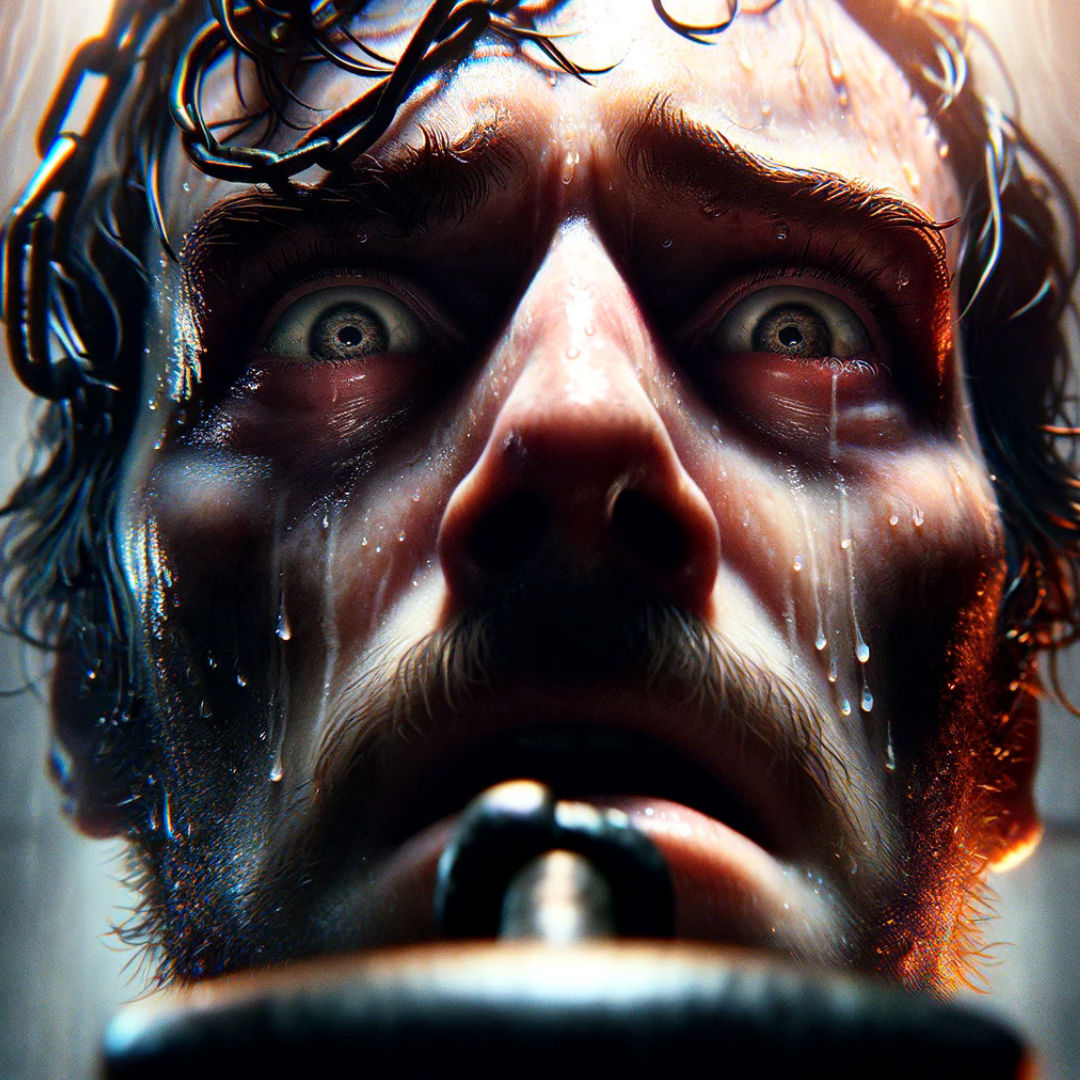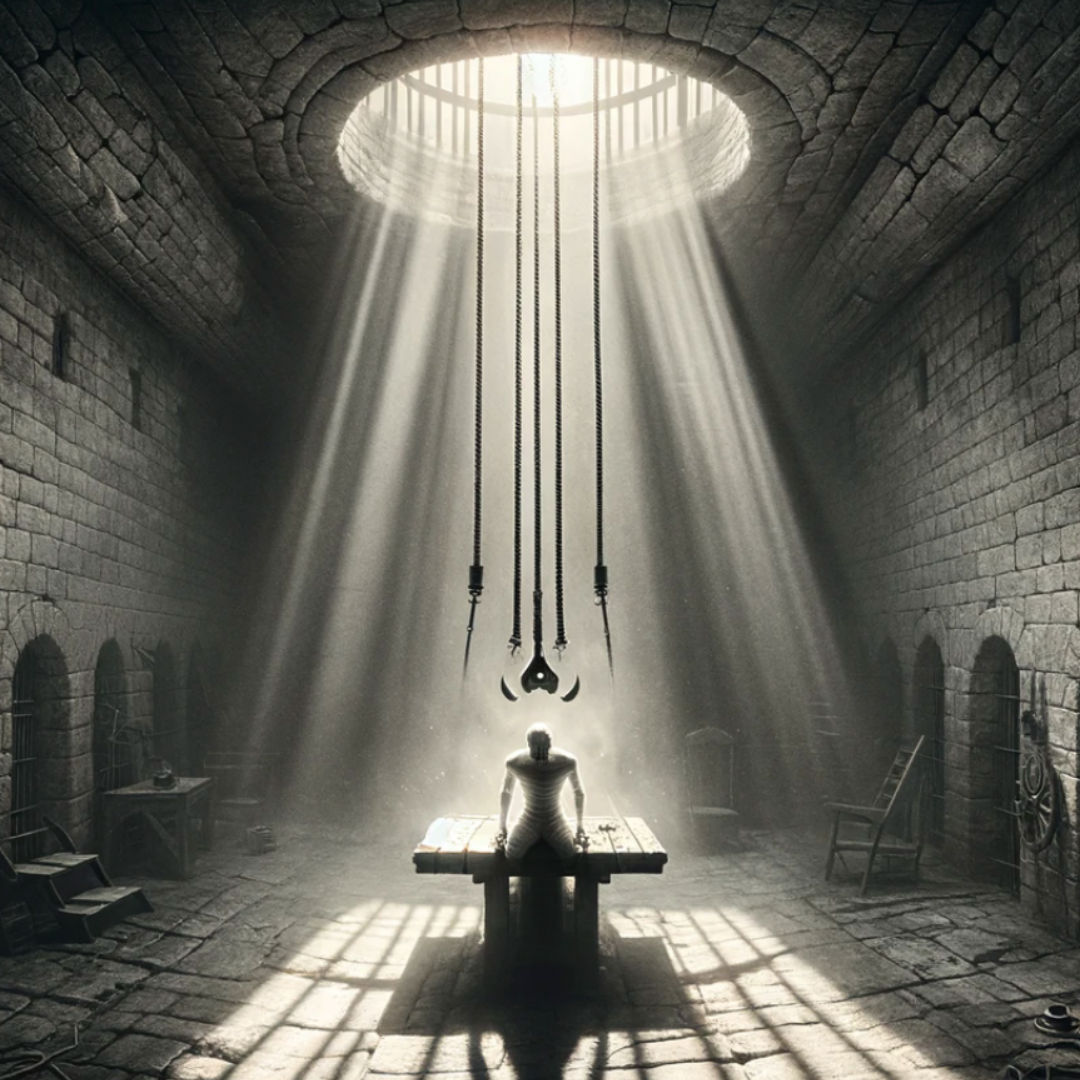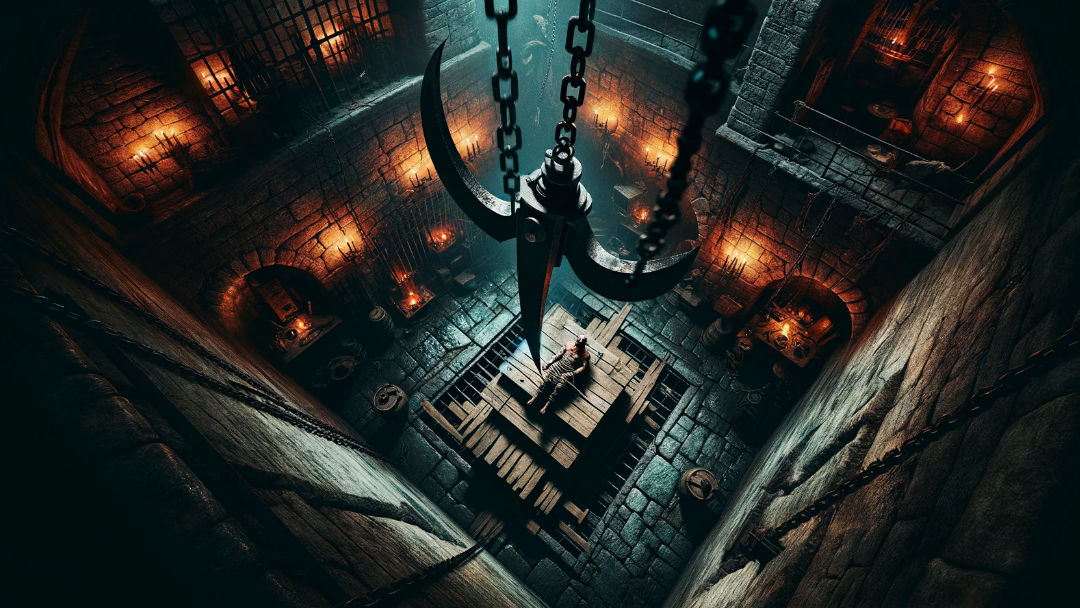In the deep, shadowed corridors of the human psyche, where fear festers and the pendulum of dread swings with an unyielding, relentless rhythm, there lies a tale so harrowing, so drenched in the macabre essence of terror, that it has echoed through the annals of time, whispering its dark secrets into the ears of those who dare listen. This tale, “The Pit and the Pendulum” by Edgar Allan Poe, not only stands as a monument to the gothic horror genre but also serves as a testament to the enduring relevance of Poe’s exploration of fear, torture, and the unknown.
The narrative unfolds within the grim walls of a dungeon, the protagonist imprisoned by the Spanish Inquisition, facing the most exquisite and diabolical forms of torture. With the precision of a surgeon, Poe carves out a story that is as much a journey into the heart of despair as it is an odyssey of the human spirit’s resilience against the inexorable march of doom. The pendulum, with its scythe-like blade, becomes a symbol not just of death but of the slow, inevitable crawl of time towards our ultimate end. The pit, a void of unknown horrors, mirrors the abyss of our deepest fears, the unseen terrors that lurk in the recesses of our minds.


Yet, how does this tale of Gothic horror resonate with the contemporary soul, you might inquire? In an era where the specters of war, environmental catastrophe, and pandemics haunt our collective consciousness, the thematic elements of Poe’s narrative find a disturbingly comfortable place. The pendulum, in its relentless sway, mirrors our own societal anxieties—the ticking clock on climate change, the oscillations of political unrest, and the ever-present sword of Damocles that is nuclear proliferation. The pit represents the unknown future, the fear of what lies ahead in our personal and collective journeys.
Moreover, the story’s influence permeates popular culture, illustrating its lasting impact. Consider, for instance, the 1961 film adaptation directed by Roger Corman, starring Vincent Price. This cinematic rendition, though taking liberties with the source material, captures the essence of Poe’s psychological horror, translating the suspense and terror of the narrative onto the silver screen. The film, with its emphasis on the macabre and the supernatural, underscores the timeless nature of Poe’s themes, proving that the human fascination with fear and the unknown is as potent today as it was in the 19th century.
Another reference that highlights the story’s enduring legacy is found in the realm of literature, in the work of Stephen King. King, much like Poe, delves into the depths of human fear and the supernatural. His novella “The Langoliers,” from the collection “Four Past Midnight,” echoes “The Pit and the Pendulum” in its exploration of time as a relentless, consuming force. The titular Langoliers, creatures that feed on the past, serve as a modern reflection of the pendulum—both are relentless agents of destruction, embodying the inexorable passage of time and the inevitability of death.
Poe’s narrative, with its rich symbolism and exploration of themes such as the fear of death, the unknown, and the fight for survival, transcends the boundaries of its 19th-century origins. It speaks to the universal human condition, to our innermost fears and the psychological battles we wage against the inevitabilities of life. “The Pit and the Pendulum” remains not merely a story from the past but a mirror reflecting our contemporary struggles, fears, and the enduring human spirit’s capacity to endure in the face of the unknowable.
Edgar Allan Poe’s “The Pit and the Pendulum” is more than a tale of suspense and horror; it is a profound exploration of the human condition, of our fears, our resilience, and the universal battle against the dark unknown. Through its depiction of the pendulum’s swing and the pit’s abyss, Poe’s story resonates across generations, reminding us that the true essence of horror lies not in the external trappings of ghouls and specters but in the internal machinations of our minds. As we navigate the complexities of the modern world, the tale serves as a stark reminder of the timeless nature of fear and the eternal struggle for hope amidst despair. Thus, Poe’s masterpiece endures, a beacon of the macabre and the psychological, illuminating the dark corners of the human soul with the flickering candle of Gothic horror.

